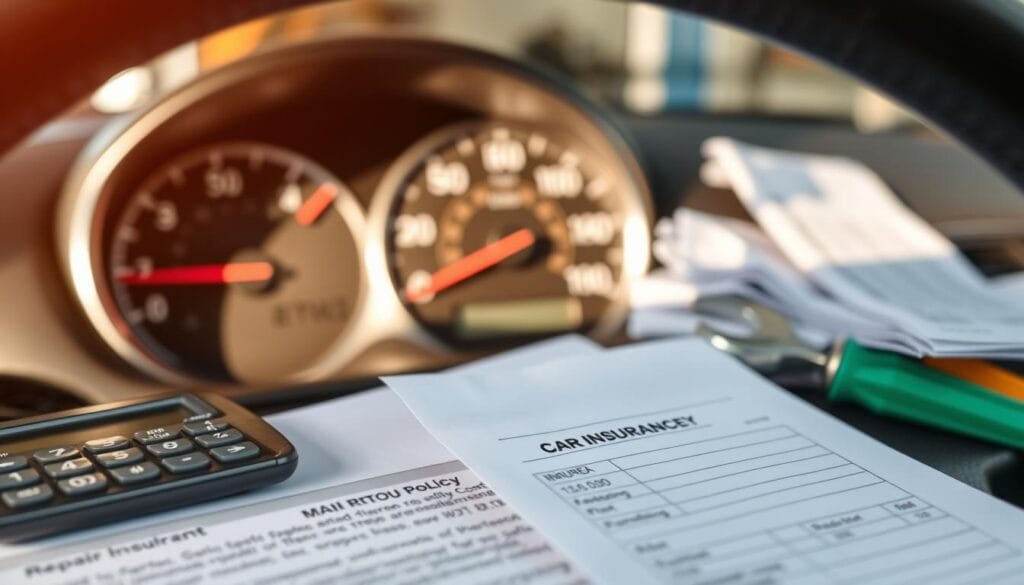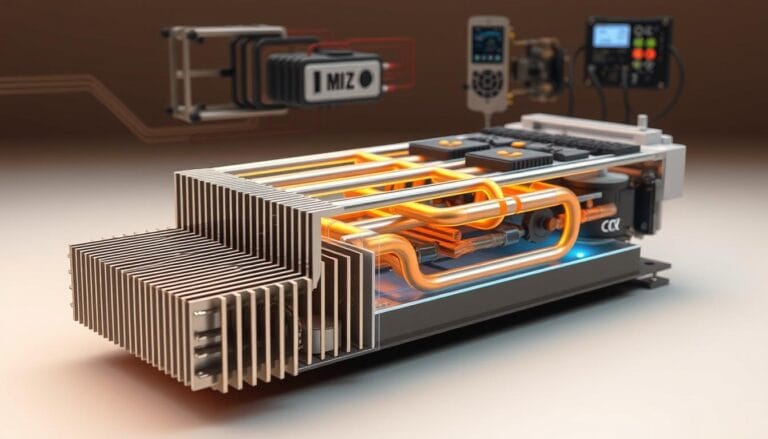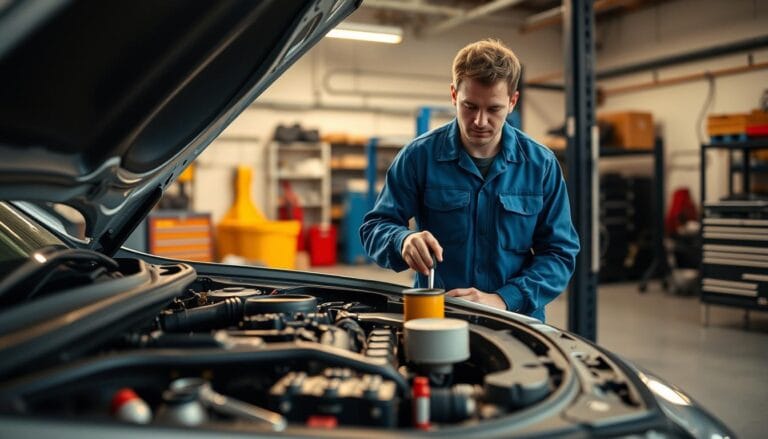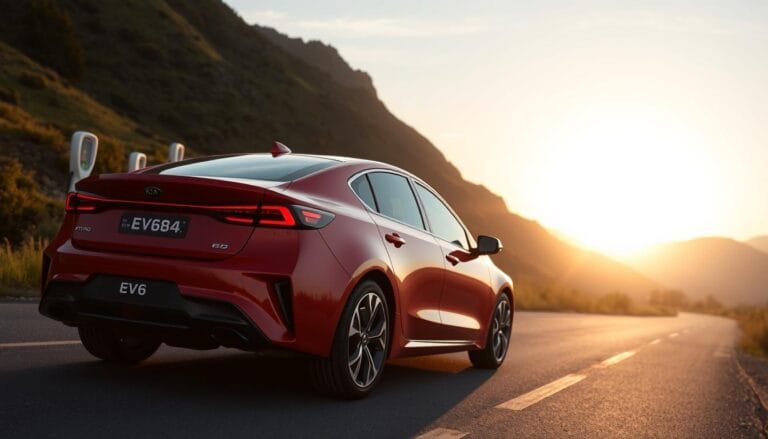Does Car Insurance Cover Repairs – Coverage Guide
Does car insurance cover repairs? Have you ever felt a sinking feeling when you need to fix your car? Auto insurance can be a big help. It covers many types of damage, from minor accidents to big storm damage. Knowing what your policy covers can save you a lot of money.
Auto insurance is more than just protecting your car. It’s about keeping you calm when things go wrong. There are many types of policies, each with its own level of protection. Your policy will tell you if you’re covered for repairs after an accident.
Insurance companies see different types of damage in different ways. Most policies cover damage from accidents and severe weather. But, they usually don’t cover damage from normal wear and tear. Knowing this can help you choose the right insurance for you.
Table of Contents
Understanding Car Insurance Basics
Car insurance can seem complex, but knowing the basics is key. It’s not just a legal must; it’s a financial shield. It protects you from unexpected repair costs and liability.
Car insurance has many layers to protect your vehicle and finances. To grasp insured car repair costs and claims, start with the basic coverage types.
Types of Auto Insurance Policies
The auto insurance world has six main coverage types:
- Liability Coverage: Protects against damages you cause to others
- Collision Coverage: Covers damage to your vehicle from accidents
- Comprehensive Coverage: Protects against non-collision incidents
- Personal Injury Protection: Covers medical expenses for you and passengers
- Medical Payments Coverage: Handles medical costs after an accident
- Uninsured/Underinsured Motorist Coverage: Protects you from drivers without adequate insurance
Key Terms to Understand
Get to know important insurance terms. Deductibles are what you pay before insurance helps. Premiums are your regular payments for coverage.
How Insurance Premiums Are Calculated
Insurance companies look at several factors to set your rates. These include:
- Driving history and past claims
- Age and driving experience
- Type of vehicle
- Geographic location
- Credit history
- Annual mileage
Knowing these factors can help you manage repair costs and claims.
Does car insurance cover repairs ?
Car insurance repair coverage can be tricky to understand. Different types of insurance protect your vehicle in different ways. This helps you deal with unexpected repair costs.
Car insurance repair deductibles are key in figuring out how much you’ll pay for repairs. Let’s look at the main coverage types that keep your vehicle safe.
Collision Coverage Explained
Collision coverage helps with repairs after an accident. Here’s what you need to know:
- Covers damage from crashes with other vehicles
- Protects against single-vehicle accidents
- Applies regardless of who is at fault
- Typically requires paying a deductible
Comprehensive Coverage Overview
Comprehensive coverage goes beyond typical collision scenarios. It protects your vehicle from:
- Natural disasters
- Theft and vandalism
- Animal-related damage
- Falling objects
- Fire damage
Liability vs. Collision
It’s important to know the difference between liability and collision coverage. This helps you choose the right protection:
| Liability Coverage | Collision Coverage |
|---|---|
| Covers damage to other vehicles | Covers your vehicle’s repairs |
| Protects against legal claims | Handles accident-related damages |
| Mandatory in most states | Optional additional protection |
Not all repairs are covered. Regular wear and tear, mechanical failures, and maintenance issues are usually not covered. Always check your policy to know what’s covered.
Situations That May Affect Coverage
Vehicle repair insurance policies can be complex. Coverage varies based on specific circumstances. Knowing how different scenarios affect your insurance helps you deal with repair challenges.
Unexpected events can change how your insurance for automobile repairs works. Let’s look at key scenarios that can affect your coverage:
Accidents Involving Other Drivers
Accidents with other drivers need you to understand your policy well. Several factors decide your coverage:
- Fault determination impacts repair coverage
- Insurance claims process can vary by state
- Uninsured motorist coverage becomes critical
Natural Disasters and Coverage
Natural disasters pose unique challenges for vehicle repair insurance. Coverage for damages from:
- Hurricanes and windstorms
- Flooding
- Hail damage
- Earthquake-related damages
| Disaster Type | Typical Coverage | Potential Limitations |
|---|---|---|
| Hurricane | Comprehensive Coverage | Deductible applies |
| Flood | Comprehensive Coverage | Negligence exclusions |
| Hailstorm | Comprehensive Coverage | Repair cost threshold |
Theft and Vandalism
Your insurance is key when facing theft or vandalism. Proactive documentation and swift reporting help with claims for these incidents.
Remember, your policy details are most important. Always check your insurance documents and talk to your provider to know your coverage well.
Costs Associated with Repairs
Understanding the costs of insured mechanical repairs is key. Car repairs can be expensive. It’s important to know what your insurance covers and what you’ll have to pay yourself.

Deductibles: What You Need to Know
Deductibles are a big part of insurance and car repair costs. A deductible is the amount you pay before your insurance starts covering. For mechanical breakdown insurance (MBI), deductibles usually range from $200 to $400.
- Deductibles vary by policy type
- Lower deductibles mean higher monthly premiums
- Higher deductibles can reduce your insurance costs
Out-of-Pocket Expenses
Your costs for car repairs depend on several things. Most insurance plans don’t cover wear and tear. So, you’re on your own for routine maintenance.
| Repair Type | Typical Coverage | Average Cost |
|---|---|---|
| Routine Maintenance | Not Covered | $548.32 |
| Accident-Related Repairs | Collision Coverage | Varies |
| Non-Collision Incidents | Comprehensive Coverage | Varies |
How Repair Costs Are Estimated
Insurance companies use standards like Kelley Blue Book to estimate repair costs. They compare the repair costs to your car’s current value. If the costs are more than the car’s value, it might be considered a total loss.
Pro tip: Keep detailed maintenance records to help support insurance claims for insured mechanical repairs.
Remember, mechanical breakdown insurance policies have specific rules. For example, GEICO’s MBI is for cars less than 15 months old with fewer than 15,000 miles. The policy can be renewed for up to seven years or until the car reaches 100,000 miles.
The Claims Process for Repairs
Dealing with insurance claims for car repairs can be tough. But, knowing the steps can make it easier. When your car gets damaged, filing a claim right away can save you time and money. Car insurance coverage for repairs depends on several key factors that every policyholder should understand.
Filing an insurance claim for vehicle repairs involves several critical steps. These steps help you get back on the road quickly and efficiently.
Essential Steps to File a Claim
- Contact your insurance provider immediately after an incident
- Gather all necessary documentation
- Document the damage with clear photographs
- Obtain a police report if applicable
- Provide a detailed description of the incident
Critical Documentation for Insurance Claims
Proper documentation is key when filing insurance claims for vehicle repairs. You’ll need to collect:
- Accident scene photos
- Police reports
- Witness statements
- Repair estimates from certified mechanics
- Insurance information from other parties involved
“The key to a successful insurance claim is thorough documentation and prompt reporting.”
Understanding Claims Adjusters
Claims adjusters are vital in deciding if your car insurance will cover repairs. They check the damage, look at repair costs, and decide how much to cover. They’ll inspect your car, review your documents, and give an estimate of repair costs.
Remember, reporting incidents quickly can speed up the claims process. Most insurance companies say to file a claim within 24-48 hours after an accident. This helps ensure your vehicle repairs are processed smoothly.
Special Situations and Considerations
Auto insurance can be tricky, mainly for unique vehicles. Your usual policy might not cover everything, like special cars or certain repairs.

It’s key to know the details of your auto insurance. This helps protect your car and handle repair costs well.
Custom Parts and Modifications
Most auto insurance doesn’t cover custom parts or changes well. If you’ve added aftermarket upgrades, you might need extra coverage:
- Tell your insurance about all changes
- Ask for a custom parts endorsement
- Think about extra insurance for pricey upgrades
Rental Car Coverage During Repairs
Rental car coverage is a big help when your car is in the shop. Many insurers offer it, but the details differ:
- Daily limits are usually $30 to $50
- How long you get coverage depends on your policy
- Some policies only cover rentals during repairs
Coverage for Old or Classic Cars
Old and classic cars need special insurance. Regular policies might not be enough for these cars:
- Look for insurers that focus on classic cars
- Get a policy that agrees on your car’s value
- Think about collector car insurance for full protection
Always check your policy closely to know what’s covered and what’s not.
How to Choose the Right Coverage
Choosing the right vehicle repair insurance is important. It should protect your wallet and keep your car safe. Think about what you need and what your car needs.
It’s key to know what you need from insurance. Drivers have different needs based on their car, how they drive, and their money situation.
Assessing Your Repair Needs
Think about these things to find the right coverage:
- How old your car is and what it’s worth
- Where and how you drive
- How much risk you’re willing to take
- How much you can afford to pay out of pocket
Comparing Insurance Providers
Look at different insurance companies when you’re shopping. Don’t just look at price. Check:
- How good their customer service is
- How fast they handle claims
- The types of coverage they offer
- If they have any discounts
Factors to Consider Before Buying
Your insurance should fit your needs. Statistics show that 80% of U.S. drivers opt for full coverage. It gives more protection.
Full coverage costs about $2,670 a year. That’s more than minimum coverage at $773. But, it protects you from big repair bills.
Pro tip: Always review your policy details carefully and understand exactly what is and isn’t covered.
Tips for Reducing Repair Costs
Managing your car’s maintenance and repair costs is key. It can greatly affect your insurance and repair bills. Smart car owners know that taking care of their vehicle ahead of time helps avoid expensive repairs.
Preventative maintenance is your best defense against high repair costs. By planning ahead, you can keep your car in top shape. This can save you money in the long run.
Essential Preventative Maintenance Strategies
- Regular oil changes every 5,000-7,500 miles
- Tire rotation and alignment checks
- Brake system inspections
- Fluid level monitoring
- Battery and electrical system testing
Finding Trusted Mechanics
Finding a reliable mechanic is important for managing repair costs. Here are some tips:
- Check online reviews and ratings
- Ask for certifications and specializations
- Request detailed written estimates
- Compare prices from multiple shops
- Verify warranty on repair work
Maximizing Warranty Coverage
Knowing your vehicle’s warranty can save you a lot of money. Mechanical Breakdown Insurance (MBI) covers vehicles under 15 months old with under 15,000 miles. A 3-year extended warranty costs about $1,214. It offers full coverage for unexpected mechanical problems.
Proactive maintenance is always more cost-effective than reactive repairs.
Common Myths About Car Insurance and Repairs
Many drivers find it hard to understand if car insurance covers repairs. There are many wrong beliefs about auto insurance that can lead to big financial surprises. Even though 25% of drivers think they can talk down their premiums, insurance companies use complex systems to set rates.
The term “full coverage” is often misunderstood. Full coverage policies include both collision and comp coverage. But, they don’t cover everything. Only about 5% of auto insurance policies cover mechanical repairs, and these are usually for specific types of accidents.
Your insurance policy might have surprises for you. For example, routine maintenance, intentional damage, and most mechanical failures are not covered. Drivers should check their policy details carefully to know what’s included and what’s not.
Getting to know your insurance policy takes research and sometimes help from experts. While comp coverage protects against theft and natural disasters, it’s not complete. Always ask your insurance provider about your coverage to avoid unexpected costs during repairs.







